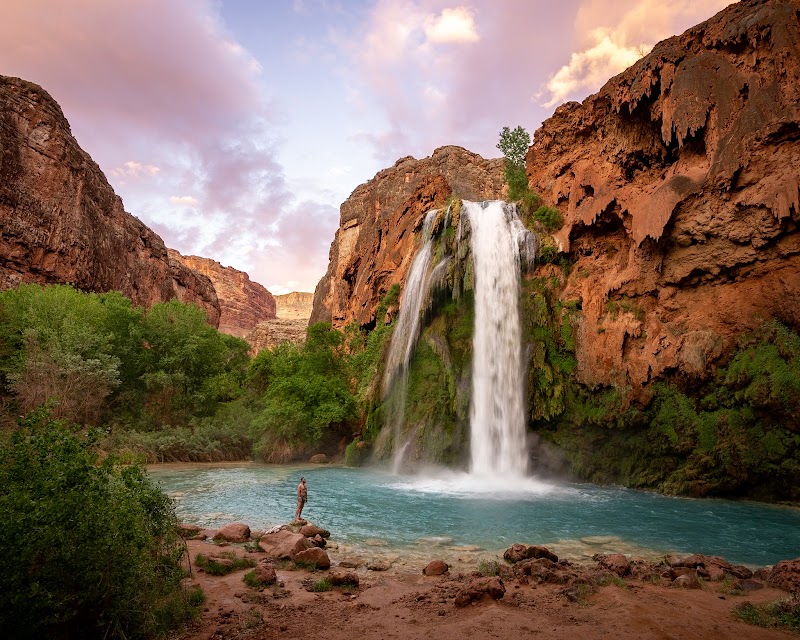Protected Places: Havasupai Falls – A Turquoise Paradise

Some places seem too beautiful to be real, and yet, there they are—tangible proof of nature’s artistry. Havasupai Falls, tucked deep within the Grand Canyon, is one of those places. Its cascading turquoise waters, framed by vivid red sandstone cliffs, feel like a portal to another world. But this paradise is more than a stunning backdrop. It’s a sacred place, protected and cared for by the Havasupai Tribe for centuries.
Let’s journey into the heart of Havasu Canyon, where water, culture, and conservation converge in a way few other places can match.
The Heart of Blue Water: A Sacred Connection
The name “Havasupai” means "People of the Blue-Green Water," a fitting tribute to the lifeblood of this remote desert oasis. For over 800 years, the Havasupai Tribe has called this canyon home, their lives intertwined with the waters of Havasu Creek.
The turquoise hue of the water—so striking it almost seems artificial—is the result of high concentrations of calcium carbonate, which coats the creek bed and reflects sunlight. This natural phenomenon not only draws visitors from around the world but also holds deep spiritual significance for the Havasupai people, who view the water as sacred.
“We are protectors, not just residents,” one tribal elder explained. “This place is alive—it’s our history, our culture, our responsibility.”
A Journey Worth the Effort
Getting to Havasupai Falls is no casual outing. The journey begins at the Hualapai Hilltop, a remote parking area perched on the edge of the canyon. From there, it’s a 10-mile hike down into Havasu Canyon, winding through sun-drenched switchbacks and rugged desert landscapes.
As you descend, the canyon walls grow taller, the air cooler, and the anticipation greater. The first sight of Supai Village—a small community of tribal members living in harmony with the land—is a welcome sign that the hardest part of the trek is over. But the true reward lies a little farther ahead, where the sound of rushing water heralds the arrival of Havasupai Falls.
The Falls: A Stairway to Paradise
Havasupai Falls is just one of five stunning waterfalls within the canyon, each more magical than the last:
1. Navajo Falls
The first cascade you’ll encounter, Navajo Falls is a picture-perfect introduction to Havasu Creek. Tiers of smaller falls tumble into crystalline pools surrounded by lush greenery—a sharp contrast to the arid desert above.
2. Fifty Foot Falls
This hidden gem is often overlooked by visitors eager to reach the main falls, but its quiet beauty is worth a stop. Swim beneath the falls or relax on the sandy beach, where you’ll feel like you have the canyon to yourself.
3. Havasupai Falls
The crown jewel. Havasupai Falls plunges 100 feet into a pool so blue it seems like a mirage. The roar of the falls, the spray of mist, the sight of red cliffs reflected in turquoise waters—this is the moment the hike becomes worth every step.
4. Mooney Falls
A short but adventurous trek downstream brings you to Mooney Falls, the tallest of the five. At nearly 200 feet, its thunderous drop is as exhilarating as the climb down—a series of chains, ladders, and narrow tunnels carved into the cliffside.
5. Beaver Falls
Further downstream, Beaver Falls is a playground of cascades and pools connected by lush vegetation and meandering trails. It’s a place to linger, explore, and lose track of time.
Conservation and Access: A Delicate Balance
The Havasupai Tribe has worked tirelessly to protect this paradise while allowing visitors to experience its magic. Access to Havasupai Falls is strictly regulated through a permit system, with only a limited number of visitors allowed per day.
Permits are notoriously hard to come by—reservations often sell out within hours of opening—but this exclusivity is by design. It ensures the environment remains pristine and that the tribe can manage the impact of tourism on their land.
Visitors are required to follow strict Leave No Trace principles, and camping is limited to designated areas along the creek. The rules are clear: this is not a place for selfies and litter—it’s a sanctuary that demands respect.
A Cultural Connection
For the Havasupai people, Havasu Canyon is more than a destination; it’s their identity. Efforts to preserve the land are deeply rooted in their cultural values, which emphasize living in harmony with nature.
Tribal members serve as guides, hosts, and storytellers, sharing the history and significance of the canyon with visitors. Their stewardship is a reminder that places like Havasupai Falls don’t just belong to the past—they’re part of an ongoing story, one that depends on all of us to ensure it continues.
Tips for Visiting Havasupai Falls
- Plan Ahead: Permits are required and must be booked online months in advance. Visit the official Havasupai Reservations website for details.
- Pack Light: The 10-mile hike can be challenging, especially in the heat. Bring only the essentials—water, snacks, and lightweight camping gear.
- Respect the Rules: Follow all tribal guidelines, including Leave No Trace principles. This is sacred land, not just a tourist destination.
- Prepare for the Climb: The hike out of the canyon is steep and strenuous. Start early to avoid the midday sun.
Havasupai Falls: A Paradise Worth Protecting
As you stand in the shadow of Havasupai Falls, watching sunlight dance on turquoise water, it’s easy to forget the outside world exists. But this place is more than just a postcard-perfect retreat—it’s a testament to the power of nature and the people who protect it.
The Havasupai Tribe has shared this paradise with visitors while preserving its sacred beauty, reminding us all of our responsibility to tread lightly and honor the lands we explore.
Havasupai Falls isn’t just a destination. It’s a promise—a promise that when we protect nature, it gives us moments of pure magic in return.








